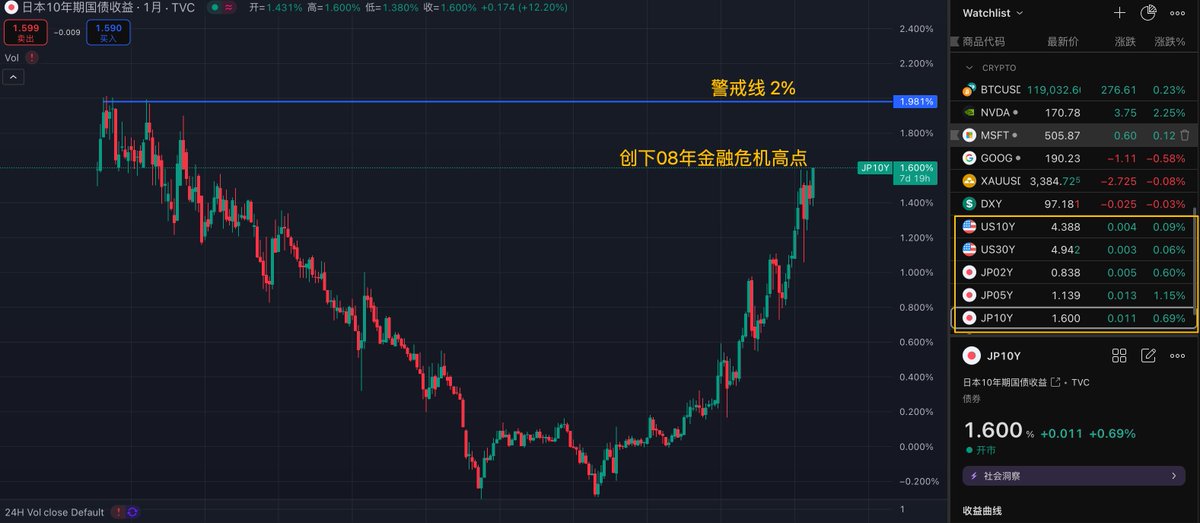Japan's 10-year government bond yield has reached a new high since the 2008 financial crisis!
The warning line is at 2%. Once breached, it signals the end of the low-interest-rate era, ushering in a chaotic period of high interest rates, high asset pricing, and high inflation!
For decades, Japan has been the "extreme representative" of negative and low-interest-rate policies globally. The 10-year government bond yield has long hovered around 0%, with the underlying logic being:
✅ Deflation + Aging population
✅ Central bank's unlimited bond purchases (YCC: Yield Curve Control)
✅ Yen assets treated as a "free funding pool," widely used for global arbitrage (carry trade).
Now that the yield has soared to 1.6%, it represents a significant drop in bond prices and a rise in yields. Some investors have started selling Japanese government bonds, and in the short term, the market may be testing whether the Bank of Japan dares to control the bond market without limits. If it breaks through 2%, it would mean a formal battle between the market and the Bank of Japan.
For many years, Japanese institutions (such as life insurance and pension funds) have lent money globally (to U.S. bonds, European bonds, and even U.S. stocks) due to the low domestic yields.
Now, if the JP10Y can offer a yield of 1.6%-2%, it creates an opportunity to "earn money while lying down":
1️⃣ Japanese funds may sell U.S. bonds, European bonds, and foreign stocks → Reinvest in domestic bonds
2️⃣ U.S. bonds, European bonds, and risk assets may come under pressure due to reduced liquidity
3️⃣ If the Federal Reserve does not lower interest rates quickly, the pressure will increase.
The awakening of the Japanese bond market is like a "debt Godzilla" that is stirring. This is not only a matter for Japan but also a signal for the global repricing of interest rates and capital structures. Caution is advised ⚠️

免责声明:本文章仅代表作者个人观点,不代表本平台的立场和观点。本文章仅供信息分享,不构成对任何人的任何投资建议。用户与作者之间的任何争议,与本平台无关。如网页中刊载的文章或图片涉及侵权,请提供相关的权利证明和身份证明发送邮件到support@aicoin.com,本平台相关工作人员将会进行核查。




